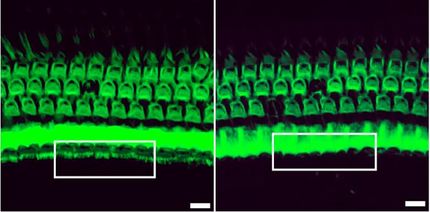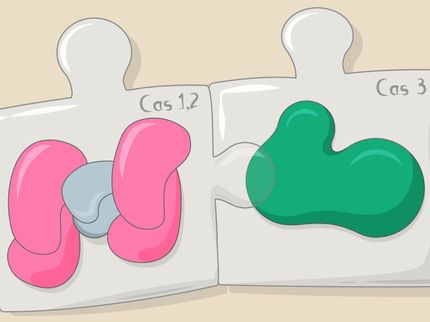Researchers probe secrets of bacterial immune system
Scientists from New Zealand's University of Otago and the Netherlands are continuing to unlock the secrets of a surprisingly flexible bacterial immune system, called CRISPR-Cas.
Just like humans, bacteria are constantly under attack by viruses that try to infect them by injecting viral DNA. This foreign DNA (together with other invading DNA, such as plasmids) has a major impact on the evolution of microorganisms. For example, the spread of antibiotic resistance and virulence factors are often introduced via invasion by foreign DNA.
CRISPR-Cas systems can remember and destroy invading DNA by storing short, invader-derived, pieces of DNA (called 'spacers') into their genetic memory banks. In an earlier study, the team discovered that viruses and plasmids, which can avoid recognition by mutating their DNA, will trigger the bacteria's CRISPR-Cas system to respond by quickly acquiring new immunological memories from these mutated threats. This process is called 'primed adaptation'.
In their latest study Associate Professor Peter Fineran's team sought to understand how these new memories were selected during the primed adaptation response.
Associate Professor Fineran explains; "We infected the bacteria with plasmids not previously encountered, or with mutated plasmids triggering the primed adaptation response. By making use of the advances in next generation sequencing through New Zealand Genomics Ltd, we analysed more than 20 million newly acquired spacers."
The team discovered that the acquisition of memories from plasmids not previously encountered was very inefficient in comparison to the mutated plasmids. By studying the order in which these new memories were acquired, the researchers developed a new model for primed adaptation.
"Examination of this order revealed that the origin of the first new memory had a remarkably strong influence on the origins of subsequent spacer selection," Dr Simon Jackson, a co-author on the study, says.
The data indicated that acquisition of new immunological memory occurs not only during primed adaptation but also as a consequence of direct defence against invading genetic elements that have not mutated to evade recognition by the CRISPR-Cas system.
"We propose that during CRISPR-Cas mediated defence, new immunity is generated as part of a positive feedback loop. This further reduces the risk of plasmids or viruses evading the bacteria's CRISPR-Cas defences through genetic mutations," says Dr Raymond Staals, the first author on the study.
Original publication
Original publication
Raymond H. J. Staals, Simon A. Jackson, Ambarish Biswas, Stan J. J. Brouns, Chris M. Brown & Peter C. Fineran; "Interference-driven spacer acquisition is dominant over naive and primed adaptation in a native CRISPR–Cas system"; Nature Comm.; 2016
Topics
Organizations
Other news from the department science

Get the life science industry in your inbox
By submitting this form you agree that LUMITOS AG will send you the newsletter(s) selected above by email. Your data will not be passed on to third parties. Your data will be stored and processed in accordance with our data protection regulations. LUMITOS may contact you by email for the purpose of advertising or market and opinion surveys. You can revoke your consent at any time without giving reasons to LUMITOS AG, Ernst-Augustin-Str. 2, 12489 Berlin, Germany or by e-mail at revoke@lumitos.com with effect for the future. In addition, each email contains a link to unsubscribe from the corresponding newsletter.


















































